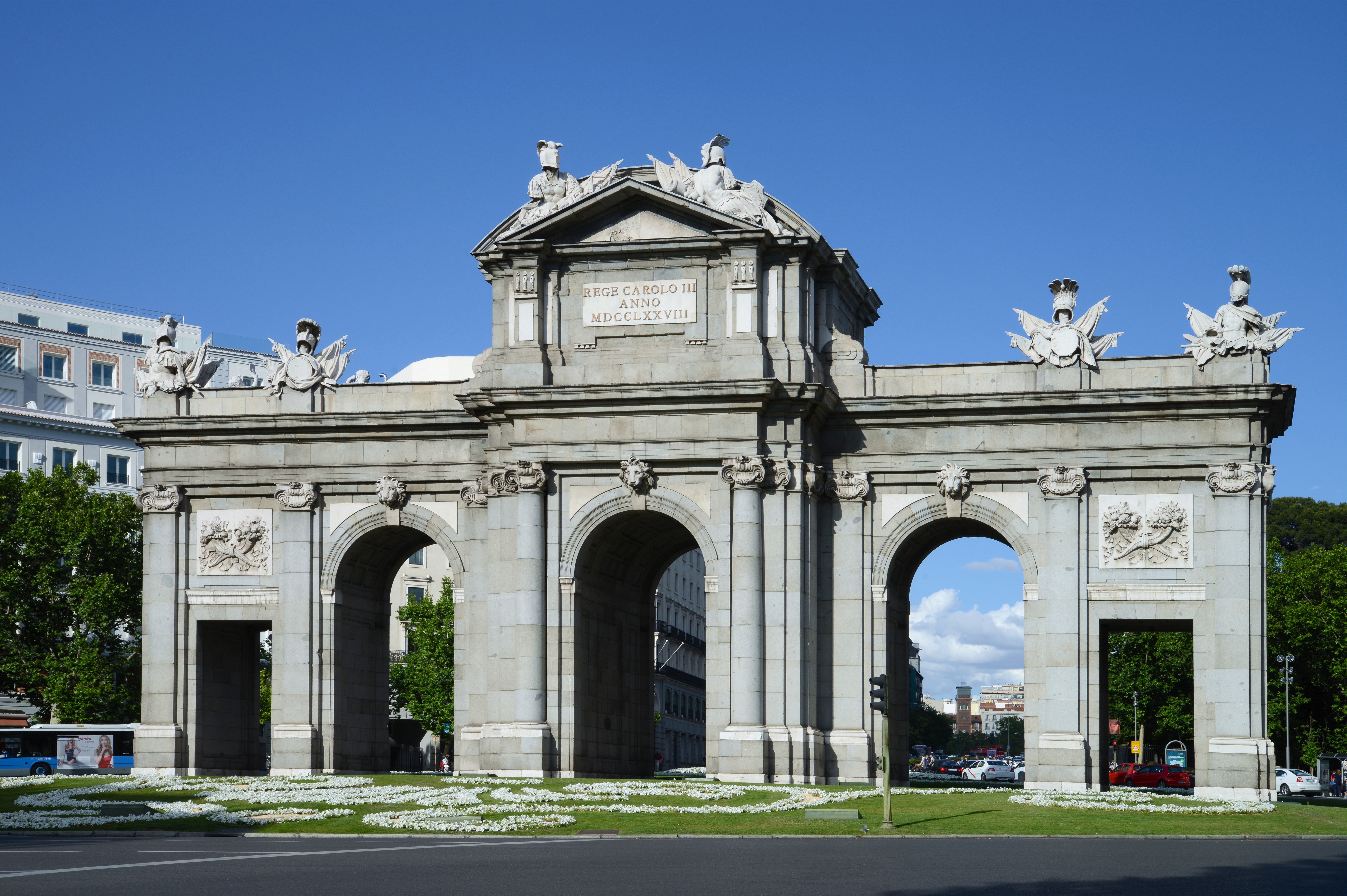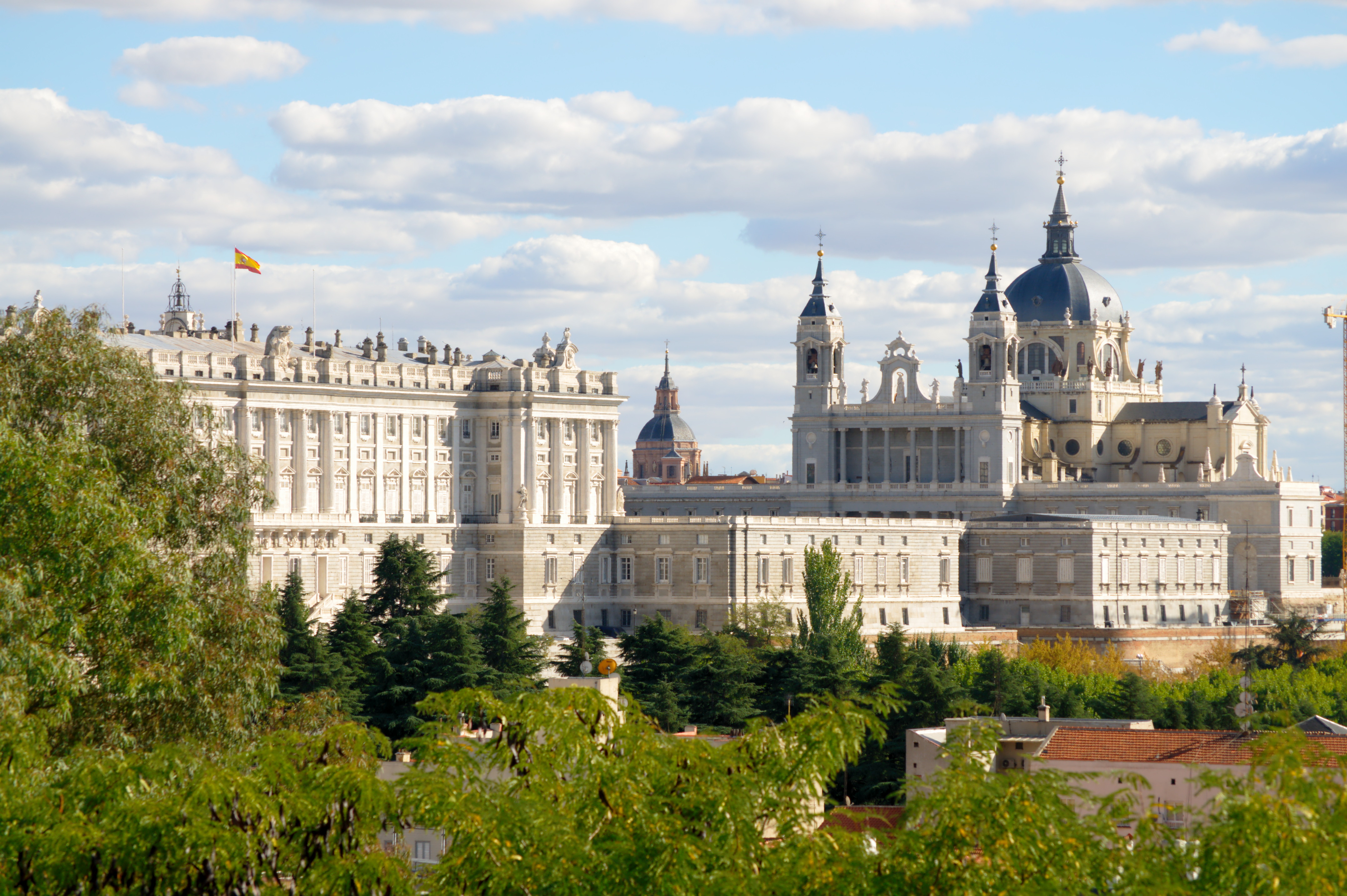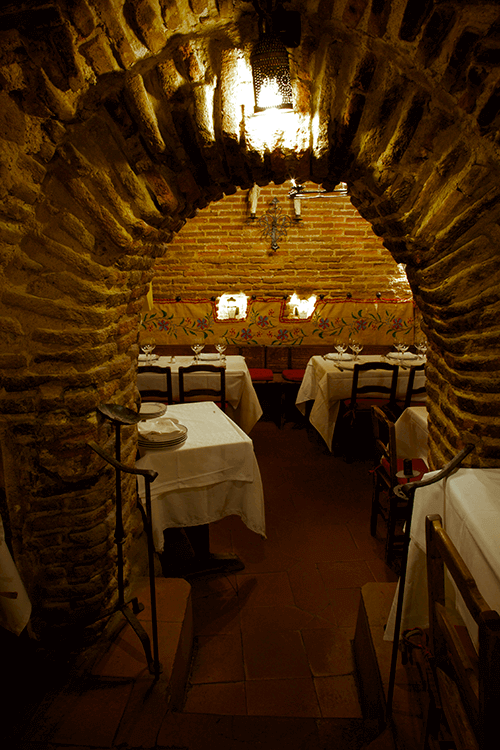Narrow winding streets define most of the cities in Morocco, at least in the warrens of the medina passageways. The medinas are the oldest walled areas of North African cities. Purposefully designed with tangled winding paths, intended to slow down ancient invaders if they breached the high stone walls of the medina. In Fez, the medina is over 1200 years old and has some of the most beautiful gates in Morocco. In many of the cities or villages, the tight paths only allow foot traffic, some permit donkeys and in Marrakech, one needs to dodge scooters and a random horse carrying propane tanks. Bellmen use enormous wooden carts to transfer luggage from a street through the circuitous paths to hotel doors.

Moroccans developed a specific cuisine known for a combination of pungent spices. I didn’t visit any supermarkets, I did peek into small single room shops along the path of my Nineteen Day Camel Caravan, and of course, sampled the tremendous towers of spices and olives in the souks. Most Moroccans in the countryside live on what their seasonal gardens produce, making their own olive oil in the fall, grinding wheat into flour in winter. The outdoor markets are bursting with a variety of freshly slain animals hanging from hooks, stacks of fresh fish fill the seafood markets, neatly arranged piles of vegetables reward daily shoppers. Jars of freshly preserved lemons, beautifully arranged glass vessels of green and black olives flavored with chunky black peppercorns. The elegance of the display is as significant as the freshness of the produce. Most locals shop every day for fresh ingredients.
On my previous visit, I hadn’t seen a communal oven or faraane. In the numerous neighborhoods of Morocco, there are five places open to the local public: mosques, schools, public water fountains, hammams, and communal ovens. Follow the scent of a wood fired oven or keep an eye open for the small kids with wooden paddles of dough headed to the local oven. Chefchaouen, the famed Blue Pearl village has multiple public fountains and communal ovens. Many of the small homes in the medina don’t have the luxury or space for an oven, they deliver their molded dough to a baker at a communal oven, reducing the need for burning wood in summer in their home and the location provides the perfect space for meeting their neighbors. For a small fee, the professional baker cooks the loaves and pastries, often delivered on oversize trays. Centuries have passed preserving this practice, the locals dressed in hooded djellabas, and in November, a heavy wool fabric, looking more like snuggly night shirts with a tasseled hood.
Small entrances to the Communal Bakery belie the size of the massive wood burning ovens just steps from the entrance, whatever remaining space holds racks of freshly baked bread or dough waiting to be slid into the ovens. The intense aroma of baking bread may lead you directly to a communal bakery. Communal ovens have been an integral part of traditional neighborhood Morocco society for centuries, a treasured link to the past.
Perhaps the only thing more important than the warm fresh bread itself is the significance of sharing it with another. In Moroccan culture, bread is considered nothing less than sacred. For many meals, it replaces the fork and knife, scooping up juicy Tajine morsels and sopping up the vegetables with bites of bread.

Moroccans love their bread; it is served at every meal, mostly small round loves sprinkled with seeds and very light flatbread, made with white or wholewheat flour with a thick crust.
Always piping hot and served with honey or homemade jams. You will see bread sold everywhere, in round loaves, stacked baguettes, platters of freshly baked bread. Bread is a community commodity.
Public fountains, seqqâya, are scattered about the medinas, some small homes may not have running water, in Fez, there are over 60 public fountains. Many are found near the mosques, which is usually the central area of a medina. In Chefchaouen, look for the ancient water systems, small open pipes which delivered water from vast canal systems engineered in the 1400’s. Many of the fountains are ornate basins built against a wall with several spigots, elaborate tiles adorn the walls.


















You must be logged in to post a comment.